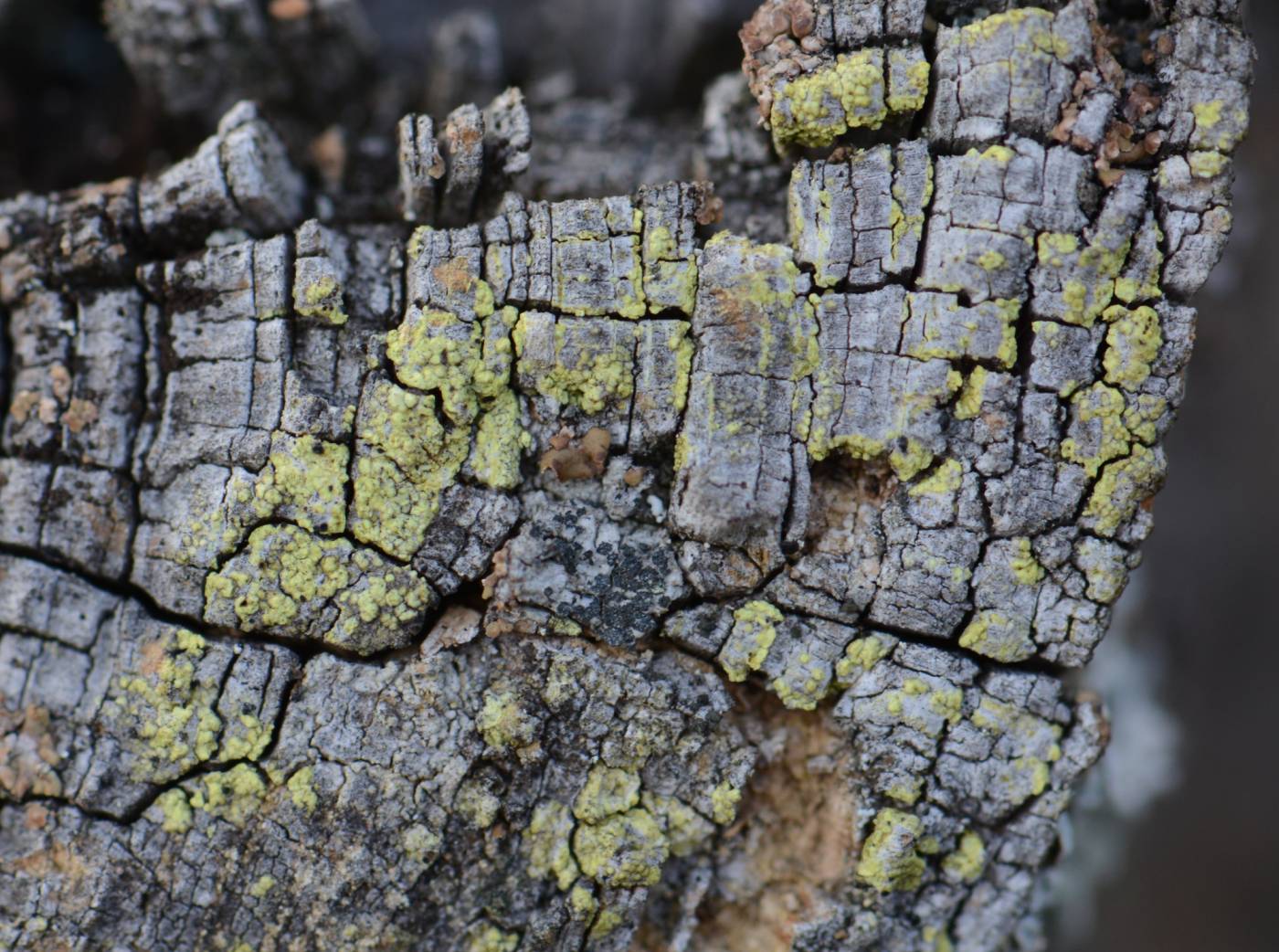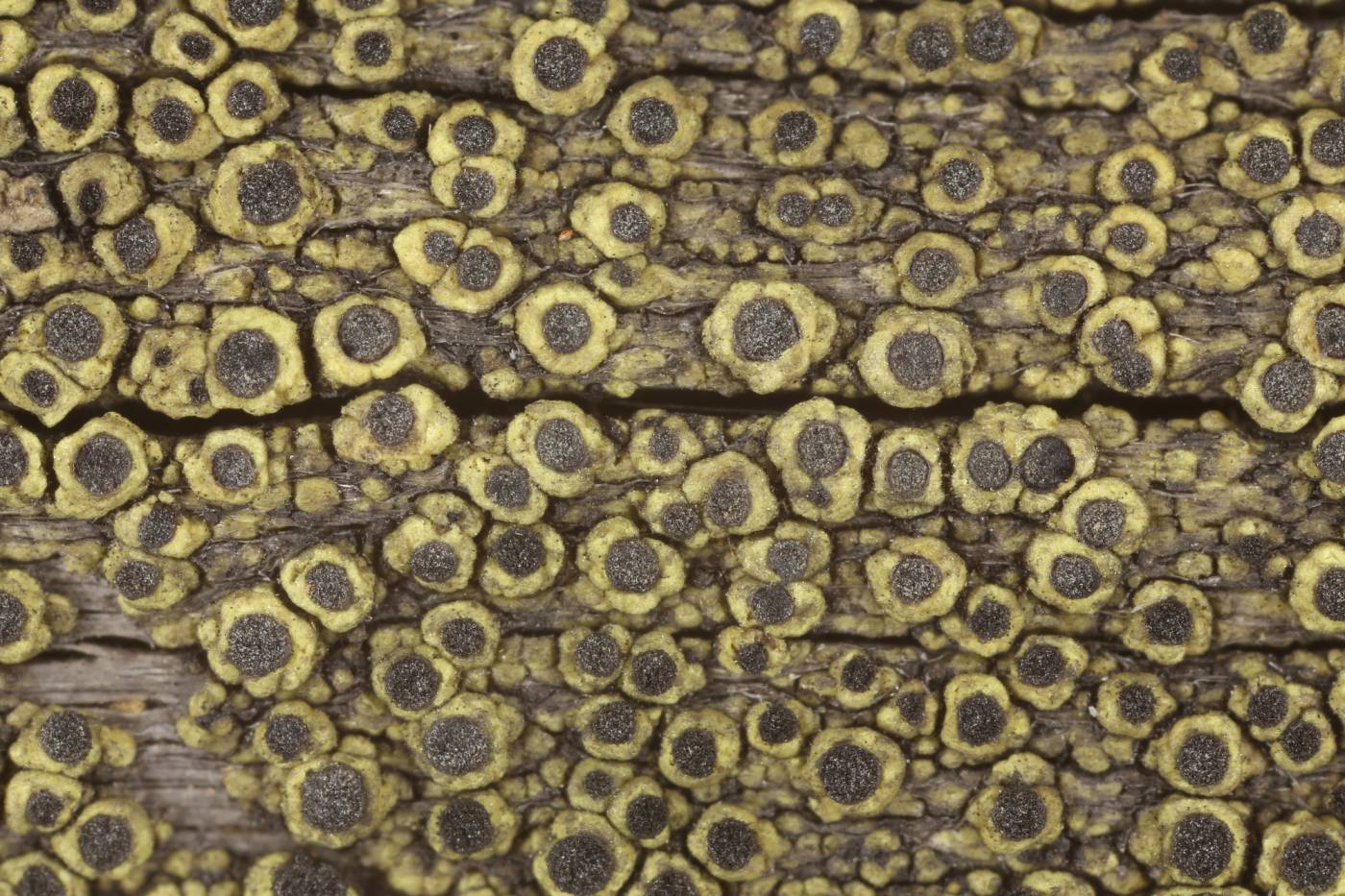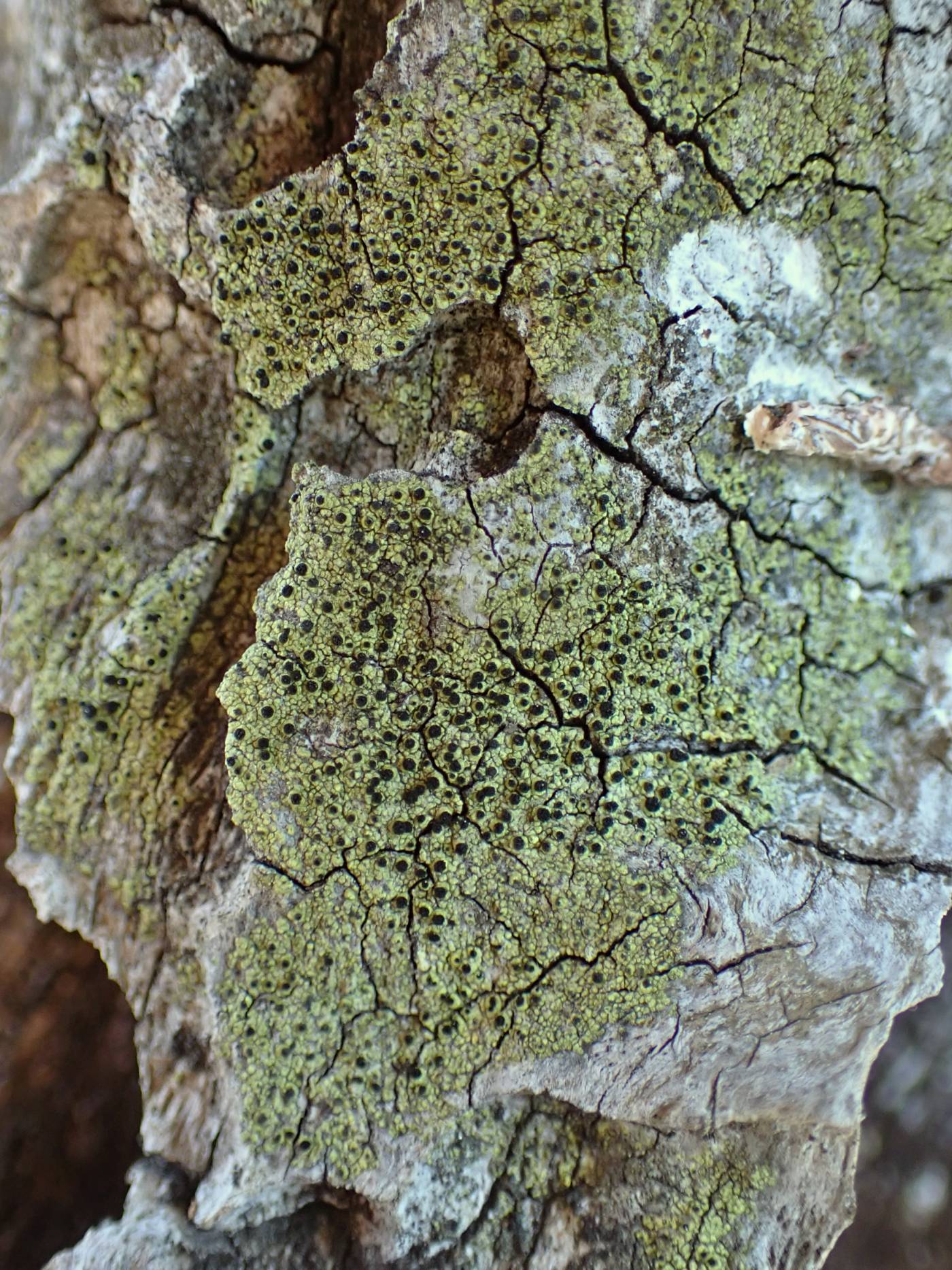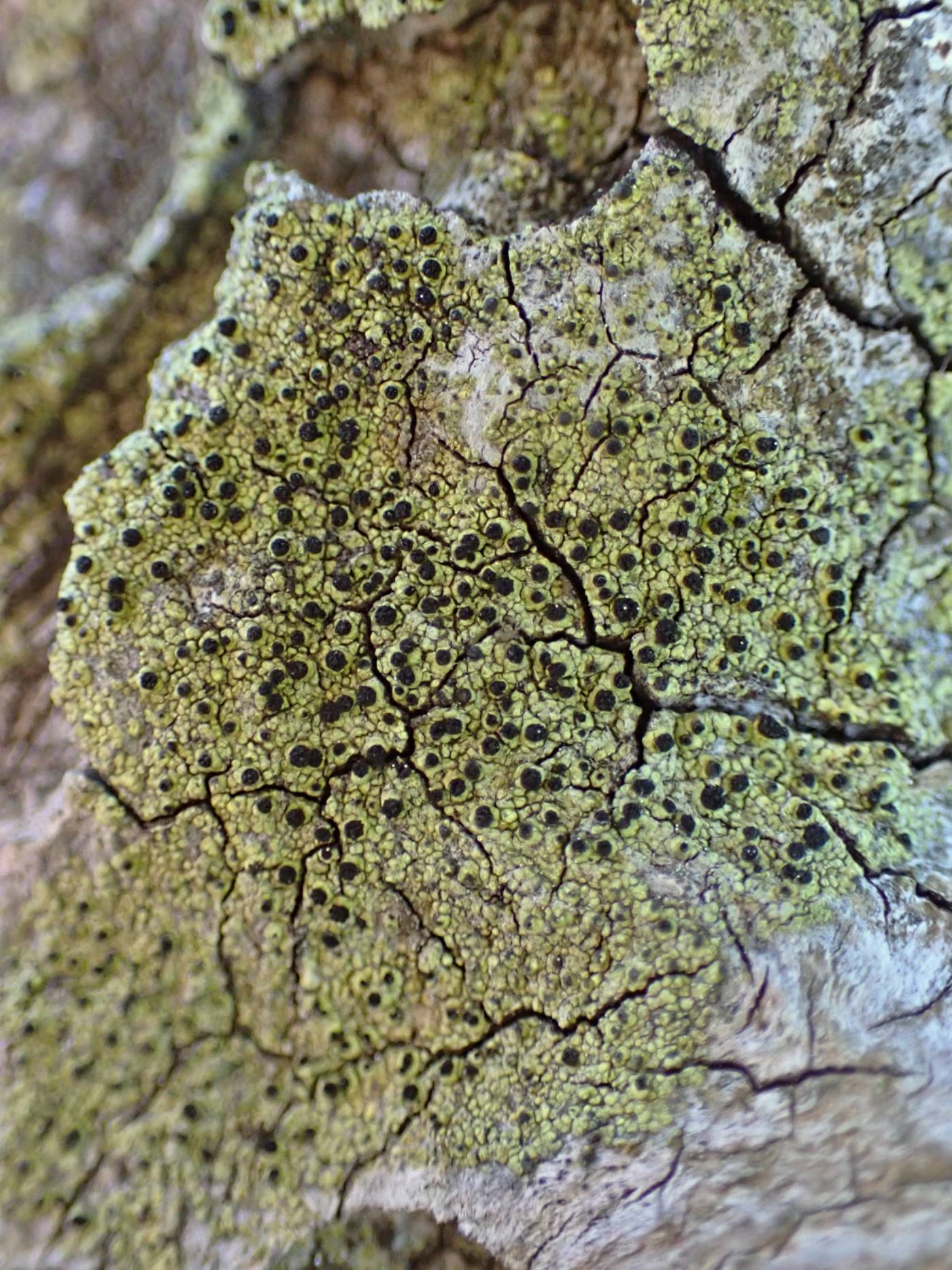A lichen characteristic by a yellow thallus, relatively immersed fruiting bodies and submuriform ascospores. Often, it occurs only in the pycnidial stage. Its typical substrate is dry, weathered hard wood in the natural as well as worked form (such as fences). It prefers the oak wood, but exceptionally it grows also on conifers. Generally, C. notarisii is more abundant at lower elevations and in continental areas. Therefore, it partly vicariates a similar, primarily mountain species, C. tigillare. In Scandinavia, the lichen usually grows on a worked timber of buildings (accompanied for example by Lecanora saligna and Pseudothelomma ocellatum) and seems to prefer dust–impregnated substrates (Areskoug & Thor 2005). Nádvorník (1942) also mentions the species is slightly nitrophilous. In Europe, the lichen is widespread but rare. From the Czech Republic it is known only from two localities, in both cases from oak wood. Cyphelium notarisii is abundant in Pohansko in southern Moravia and a small population was also found on Vraní skala in the Podyjí National Par.
Literature: Nádvorník J. (1942): Systematische Übersicht der mitteleuropäischen Arten der Flechtenfamilie Caliciaceae. – Studia Botanica Čechica 5: 6–46. Areskoug V. & Thor G. (2005): Distribution, status and ecology of the lichen Cyphelium notarisii in Sweden. – Annales Botanici Fennici 42: 317–326.
taxonomic classification:Ascomycota → Lecanoromycetes → Caliciales → Caliciaceae → Calicium
most frequented synonyms:Cyphelium notarisiiRed List (Liška & Palice 2010):CR – critically endangered
Red List (Malíček 2023):C1 – critically endangered
Occurrence in the Czech Republic
All records: 6, confirmed 6. One click on a selected square displays particular record(s), including their source(s).




